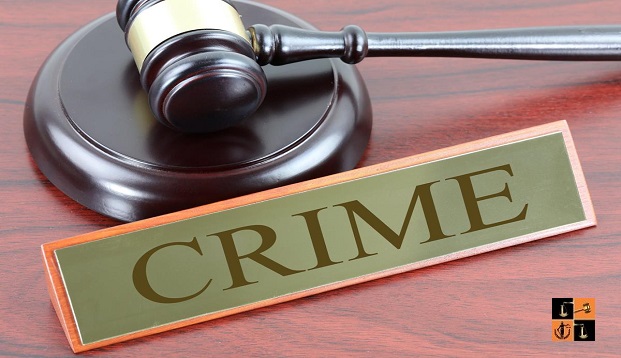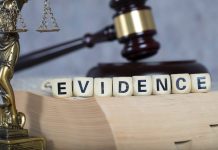This article is written by Shivi Khanna, a student of the School of Law, Sushant University, Gurgaon. This article is an attempt to examine and understand the key terms described in the interpretation clause i.e., Section 3 of the Indian Evidence Act, 1872.
Table of Contents
Introduction
The primary objectives of the law of evidence are to aid the courts in ascertaining the truth, to prevent inquiries from becoming drawn-out and prolonging the judicial process, and to ensure that judges do not grow confused or muddled due to irrelevant or inconsequential evidence. The origin of the law of evidence in India can be traced to the concepts enshrined in English law. The Indian Evidence Act, 1872 (henceforth referred to as the Act), which governs the rule of law of evidence in India is not exhaustive, therefore, English law can be used as a reference while interpreting the provisions of the aforementioned Act. However, principles of English law inconsistent with the Act cannot be applied.
Evidence which does not fall under the Act, is not admissible in court, even if it is the key to determining the truth of the matter. Furthermore, the parties cannot opt-out of following the provisions of the Act through means, such as contracts, nor do courts have the power to neglect relevant facts using the pretext of conforming to public policy.
Evidence law is supported by three main pillars: 1) Evidence should only consist of matters in issue; 2) Hearsay evidence does not have evidentiary value; 3) There should be an effort to provide the best evidence in all cases.
Section 3 of the Indian Evidence Act, 1872 is an important clause that provides the definition of important terms that appear throughout the Act. Section 3 clearly defines what constitutes a court i.e., who is authorised by this Act to collect evidence and reach a decision. Section 3 also states what is a fact, what is relevant, the different types of evidence, documents, how a fact is proved, disproved and not proved. The significance of Section 3 lies in how it sets up the reading of the rest of the Act, and the interpretation of evidence law according to it.
Section 3 of the Indian Evidence Act, 1872
Interpretation clause
Section 3 of the Indian Evidence Act, 1872 contains details on the interpretation of the terms – Court, Fact, Relevant, Facts in issue, Document, Evidence, Proved, Disproved, Not Proved, India – unless the context implies a contrary intention.
Court
‘Court’ consists of all judges and magistrates, and any person who is legally authorised to take evidence, with the exception of arbitrators and tribunals. Arbitrators and tribunals function on the basis of natural justice and are authorised to collect evidence, however, they do not come under the definition of “Court” within the meaning of this Act.
In C.I.T v. East Court Commercial Co. Ltd. (1967), it was held that income tax authorities do not fall under the definition of “Court.”
It is interesting to note that the 69th Law Commission Report recommended making a comprehensive definition of “Court” to avoid confusion. The Law Commission’s definition included civil, criminal, revenue courts and tribunals within the definition of “Court.” However, the definition of “Court” has not been amended to include revenue courts or tribunals till date.
In Brajnandan Sinha v. Jyoti Narain (1956), the Supreme Court delved into the definition of “Court” and came to the conclusion, that such a body or forum must be capable of making a decision or judgement which is final and authoritative in nature. This is the basic quality of a judicial pronouncement, and a salient characteristic of a “Court.”
Fact
‘Fact’ may be defined as:
Any thing, state of things, relation of things, that can be sensed (external fact).
For instance –
- When certain things are placed in a certain way/pattern, it is a fact.
- When a person sees or hears something, it is a fact.
- The words spoken by a person, is a fact.
Any mental condition of which any person is conscious (internal fact).
For instance–
- The opinion of a person.
- The intentions of a person.
- A person acting in good faith/fraudulently.
- The deliberate choice of a person’s words.
- Feeling a certain sensation at a certain time.
- A person’s reputation.
Physical and psychological facts
Physical facts are those that can be discovered through the use of a person’s senses. For instance, observing the arrangement of certain objects, hearing the distinct sound of a horn, etc. However, the law of evidence is not restricted to physical facts “only”. Beyond, physical facts lie psychological facts which are based on the mental condition of a person. For instance, when a person commits fraud, his intention to deceive the other party is also a fact.
Positive and negative facts
When the existence of a situation or state of things can be confirmed, it is a positive fact. For instance, in a property dispute case, the deceased left a will to bequeath his property. The existence of the will is a positive fact. On the other hand, the non-existence of a situation or state of things is a negative fact. For instance, the lack of a weapon at the scene of a murder.
Facts in issue
Facts in issue are those facts that are sought to be proved and are also called “principal facts” or factum probandum. When the rights and liabilities of the parties are dependent on a fact that is in dispute or controversy, that fact is in issue.
For example, ‘X’ is accused of defaming ‘Y’ through libel. The possible facts may be in issue: that ‘X’ caused damage to ‘Y’s reputation; ‘Y’s business suffered losses due to ‘X’s defamation; ‘X’ wrote and published defamatory statements about ‘Y’ out of malice, etc.
Facts in issue determine the arguments of both the plaintiffs and defendants. The parties must prove that the facts in issue lean toward their pleadings in order to sway the court’s decision in their favour. The substantive law applicable to the offence determines what constitutes the facts in issue. In criminal cases, facts in issue depend on the contents of the charge-sheet, whereas, in civil cases the framing of issues takes place.
Facts in issue form the foundation upon which the parties argue their case, and when these facts are proved to the satisfaction of the court, a decision can be made.
Relevant facts
Relevant facts are those which are needed to prove or disprove a fact in issue. Relevant facts are also called evidentiary facts (factum probans). These facts are not in issue – they are not the main issue of controversy or dispute between the parties. Rather, relevant or evidentiary facts dig deeper into the context or circumstances of the facts in issue, and help to draw inferences about them.
Admissions and confessions, statements by those who are not witnesses, precedents from case laws, statements made under special circumstances, facts which form a chain of logic with facts in issue, third party opinions, and evidence as to the character of a person – all these fall under the category of relevant facts.
Relevant facts indicate a relationship between facts, which according to a sound chain of logic and common sense, either prove or disprove the existence of each other. Relevant facts act as supplementary material to sway the opinion of the court in favour of the party making the argument with respect to the facts in issue.
For example, ‘A’ is accused of committing theft. A relevant fact would be that ‘A’ has had a history of pickpocketing and shoplifting, and has been prosecuted before. The fact in issue would be – whether A has committed theft.
Document
A document within the meaning of this Act, is any writing, marks, figures inscribed on a surface for the purpose of recording a matter. In R v. Daye (1908) the Court observed that the notches made by bakers and milkmen on wood to indicate the amount of bread or milk supplied are also documents. The surface upon which the writing or marks are inscribed is not restricted to paper. Writings, words in photographs, maps, plans, inscriptions on metallic surfaces – all these fall within the category of document.
Evidence
The origin of the term ‘evidence’ can be traced to the Latin words “evident” or “evidere” – meaning to discover, determine or arrive at the truth. Evidence also implies – to make clear, certain, notorious. Evidence plays a key role in the judicial process by supporting or building an argument before the court, with respect to proving or disproving a matter of fact or controversy, between the parties.
Oral evidence
Covered in detail under Section 59 and 60 of the Act, oral evidence can be defined as the statements made by witnesses which are allowed or needed by the court. These statements by witnesses help determine the matter in issue or controversy between the parties. When a witness orally makes a statement it is regarded as oral evidence. Witness testimony has also been called ‘living proof.’ However, in the cases where a witness is unable to speak, then communication through signs or writing is also admissible as oral evidence.
Usually, all evidence that is not written in documents is oral evidence and is sufficient to prove a fact or title. However, according to Section 60, in the presence of both documentary evidence and oral evidence, the former takes precedence.
Oral evidence must be direct i.e., the witness making the statement must have seen or heard, or experienced the event first-hand.
Hearsay evidence
Whenever information passes through indirect channels, such as rumours or gossip, it can be termed as ‘hearsay.’ Hearsay evidence is that information which has not been obtained through direct means, and has not been experienced by the witness firsthand. Hearsay evidence is not admissible in court and does not hold evidentiary value.
However, hearsay evidence is admissible in the case of the following exceptions:
- A statement made by someone other than a witness becomes admissible when it is part of the transaction in question according to the principle of res gestae in Section 6. For example, an hour before a murder took place, ‘A’ heard ‘B’ making death threats to the victim inside the victim’s house. B’s death threats before the murder were part of the transaction in question as the murder took place an hour later.
- The testimony of a witness to whom a confession or admission was made outside the court.
- Dying declaration made under Section 32(1) of the Indian Evidence Act, 1872.
- Entries in books of account in the course of business under Section 34; entries in public registers under Section 35.
- Under Section 60, in the absence or death of experts, their thoughts and words expressed in their treatises and books can be counted as evidence.
- When a slanderous statement is made in the presence of a witness, the witness can testify as to the fact that the statement was made.
Documentary evidence
Documentary evidence is covered by Section 61-90 of the Act. All documents submitted to the court for scrutiny fall under the umbrella of documentary evidence. Documentary evidence holds precedence as compared to oral evidence, in terms of both credibility and permanence. Documentary evidence is also called ‘dead proof.’ Due to the improvement in technology and the coming up of legislation such as the IT Act, 2000, electronic evidence has also been included within the purview of documentary evidence.
Documentary evidence can be of two types: 1) primary evidence, and 2) secondary evidence.
Primary evidence
Primary evidence includes the original document; a document executed in separate parts; a document that has been manufactured or produced by one uniform, mass process (for example, photographs, lithographs, etc).
Secondary evidence
Secondary evidence includes certified copies of the original document. Also, when original documents are used to make a large number of copies through a mechanical process, for example, by printing, photocopying, etc.
Classification of evidence
Evidence can be classified into various types and is not restricted to a narrow, rigid definition.
Direct and circumstantial evidence
Direct evidence directly addresses the fact in issue or the matter of controversy between parties. It includes both the statement of witnesses and documentary evidence. For example, ‘A’ witnessed ‘B’ killing ‘C’ with a knife. ‘A’s witness testimony of the murder of ‘C’ by ‘B’, is direct evidence. Direct evidence takes precedence over circumstantial evidence. Direct evidence depends on the credibility of the witness testimony and the documents submitted.
Whereas, circumstantial evidence is based upon relevant facts that prove or disprove the fact in issue. Circumstantial evidence must prove the guilt of the accused beyond doubt if it is to be admissible in court. Circumstantial evidence takes the indirect route to prove or disprove the fact in issue, however, it must not be confused with secondary evidence.
In cases like Umedbhai v. the State of Gujarat (1977) and Gade Lakshmi Mangraju v. the State of Andhra Pradesh (2001), when a chain of circumstantial evidence forms a cumulative effect through a sound logic chain, and the circumstances are conclusive in nature, and prove the guilt of the accused beyond doubt, then circumstantial evidence is very much admissible in court.
Real and personal evidence
Real evidence consists of the assumptions or conclusions the court draws from the information available to it. For example, DNA found at the crime scene; the nervous behaviour of the accused before the judge; fingerprints found on the murder weapon, etc. Personal evidence is obtained through human agency.
Original and unoriginal evidence
Original evidence is firsthand evidence, which a witness has personally experienced through his own senses. Whereas, unoriginal evidence is secondary or hearsay and has been learned indirectly through a third party.
Substantive and non-substantive evidence
Substantive evidence is that evidence which does not need to be corroborated and serves to prove or disprove a fact in issue. Substantive evidence can be both circumstantial or direct. Non-substantive evidence does not hold enough weight by itself and is not sufficient to prove or disprove a fact.
Positive and negative evidence
Positive evidence proves that an event has taken place or that a certain fact exists. Whereas, negative evidence proves that a fact does not exist.
Prosecution evidence and defence evidence
Evidence used by the prosecution to prove the guilt of the defendant or accused is called prosecution evidence. On the other hand, the evidence used by the defendant to prove his innocence is called defence evidence.
Proved
When the court believes beyond a reasonable doubt in the existence of a certain fact or believes that a reasonable man would be likely to act in a certain manner on the basis of his belief that said fact exists, then the fact is said to be “proved.”
Disproved
When the court believes beyond reasonable doubt that a fact does not exist, and that a reasonable man would upon knowing the details of the case, act on the belief that the fact does not exist, the fact is said to be “disproved.”
Not proved
A fact is said to be “not proved” when it is neither proved nor disproved, and a reasonable man would not believe in the existence or the non-existence of the fact.
Conclusion
The law of evidence is a key tool to aid the judiciary in weaving and sorting through the vast information each case presents. Only evidence which falls under the Indian Evidence Act, 1872 is admissible and has evidentiary value. This prevents the court from wasting its time and helps the court in quickly gaining access to the relevant and correct evidence needed to determine the outcome of a case. Section 3 of the Indian Evidence Act, 1872, is an interpretation and definitions clause that describes key terms and concepts used in the Act, and in deciphering evidence law.
References
- http://indiankanoon.org/
- https://indiankanoon.org/doc/1031309/
- https://legislative.gov.in/sites/default/files/A1872-01.pdf
- https://www.advocatekhoj.com/library/lawreports/reformofjudicial/80.php?Title=&STitle=The%20Law%20of%20Evidence
- R v Daye, [1908] 2 KB 333
- C.I.T v. East Court Commercial Co. Ltd (1967)
- Brajnandan Sinha v Jyoti Narain (1956)
- Umedbhai v State of Gujarat
- Gade Lakshmi Mangraju v State of Andhra Pradesh
- https://www.advocatekhoj.com/library/lawreports/evidenceact1872/3.php?Title=Review%20of%20the%20Indian%20Evidence%20Act,%201872&STitle=Section%203:%20Interpretation%20clause
- Ashok Jain, Law of Evidence, Ascent Publications, 2014
Students of Lawsikho courses regularly produce writing assignments and work on practical exercises as a part of their coursework and develop themselves in real-life practical skills.
LawSikho has created a telegram group for exchanging legal knowledge, referrals, and various opportunities. You can click on this link and join:
Follow us on Instagram and subscribe to our YouTube channel for more amazing legal content.
 Serato DJ Crack 2025Serato DJ PRO Crack
Serato DJ Crack 2025Serato DJ PRO Crack











 Allow notifications
Allow notifications



